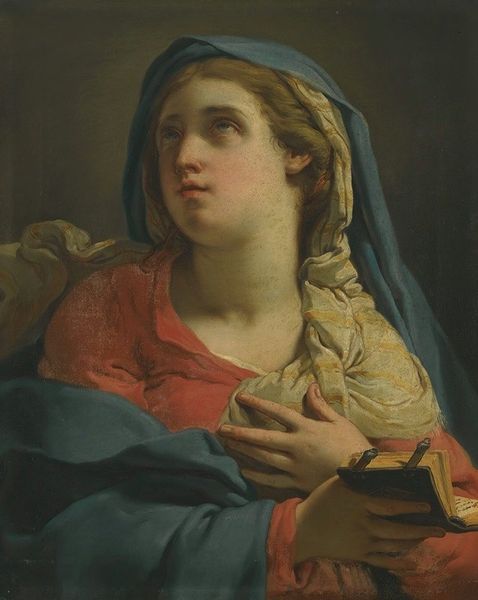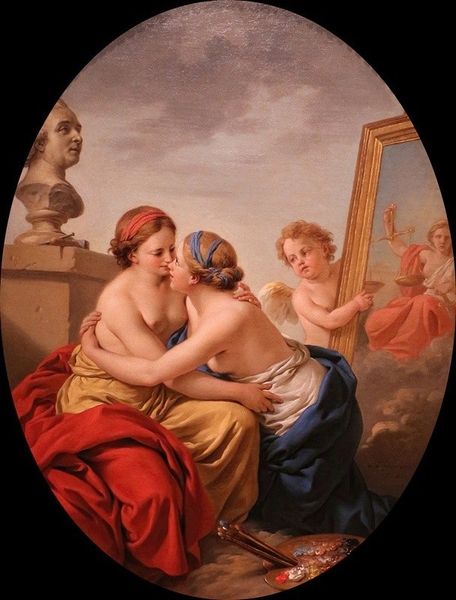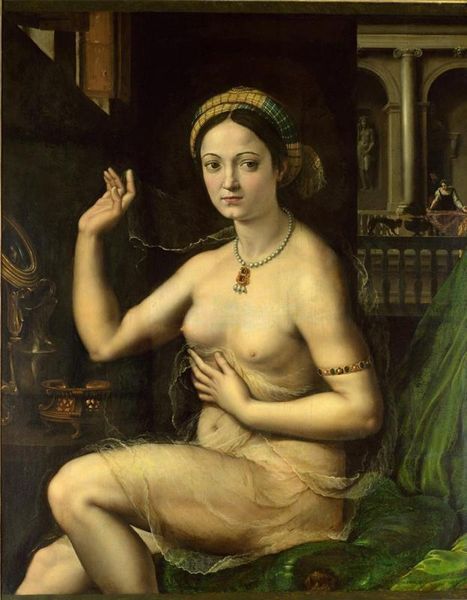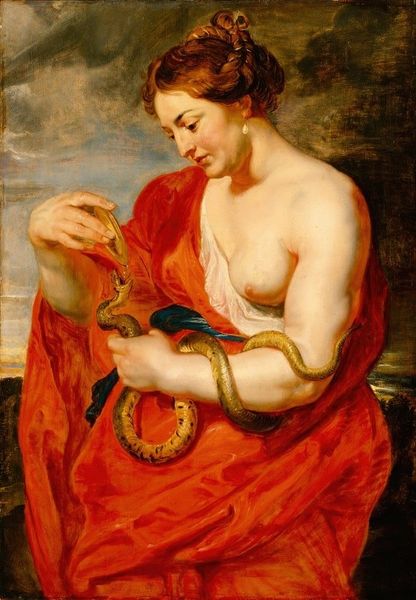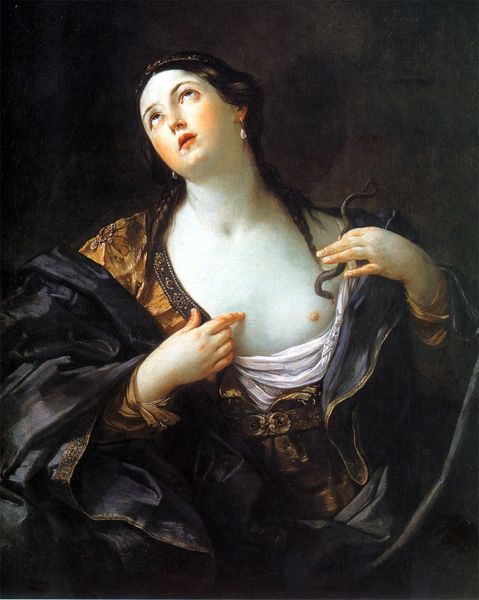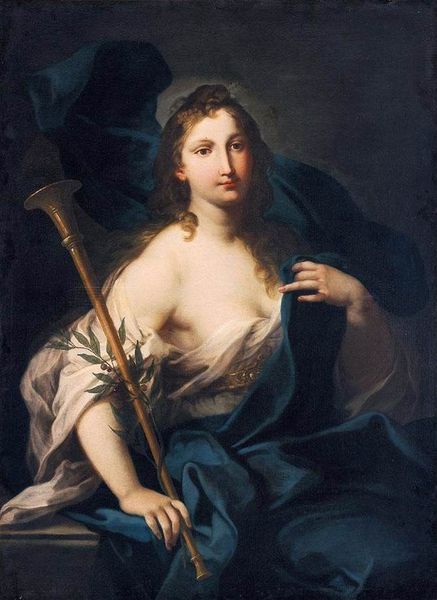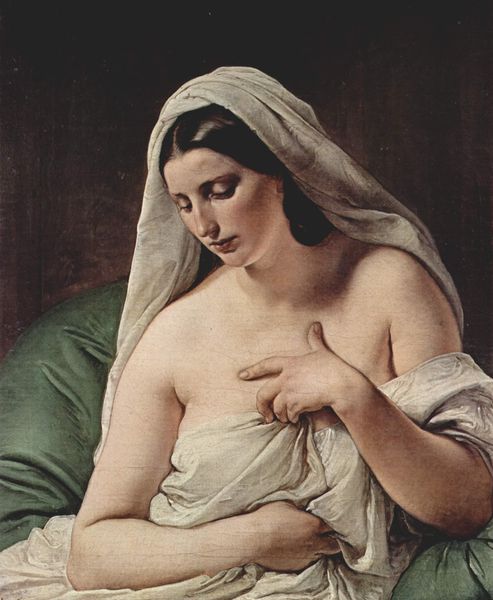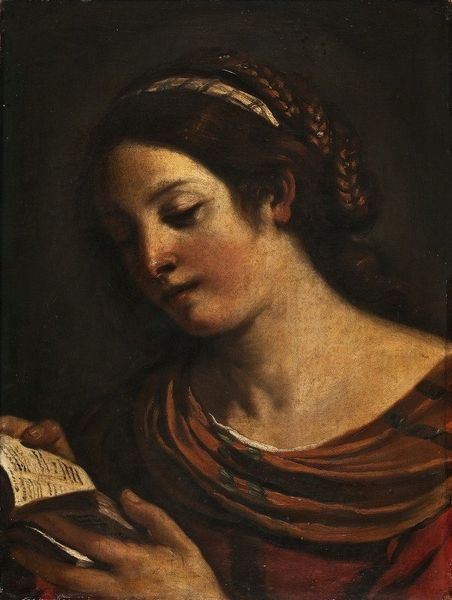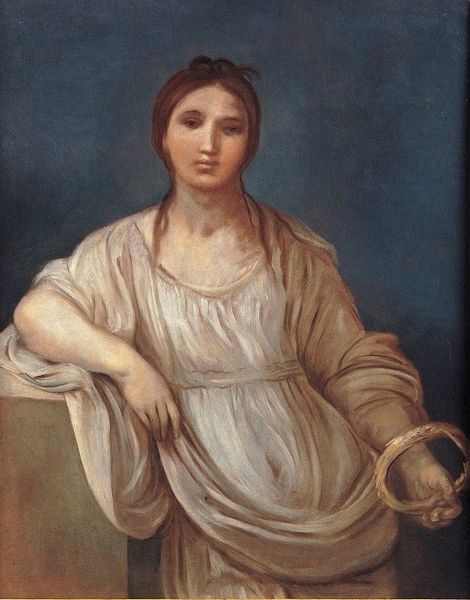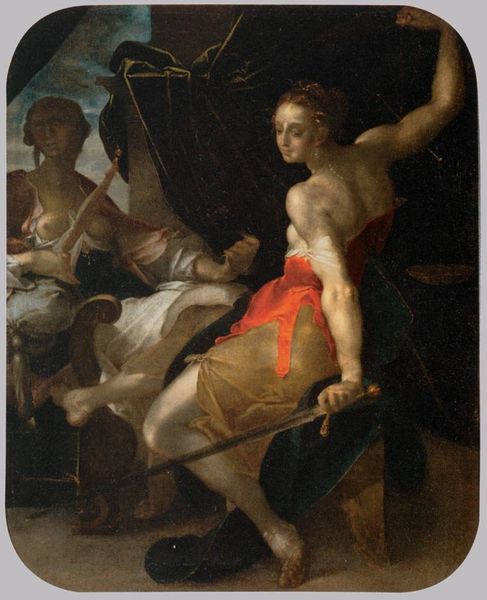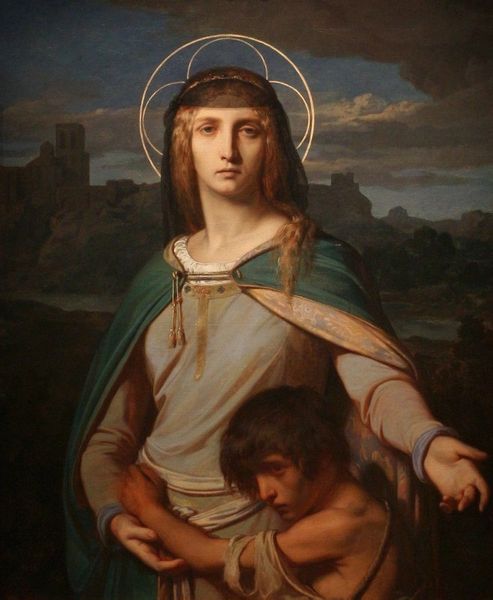
painting, oil-paint
#
portrait
#
allegory
#
baroque
#
portrait
#
painting
#
oil-paint
#
history-painting
#
nude
Copyright: Public domain
Editor: Sebastiano Conca’s "Allegory of Peace," an oil painting, presents a woman with a dove, surrounded by rich colours and symbolism. I’m struck by the way she looks out at us, almost pleading. What do you see in this piece? Curator: Considering the socio-political context, this piece functions as a public declaration, attempting to visualise and advocate for peace during a time of European conflict. The woman, perhaps a personification of Peace herself, holds the dove – a common symbol, of course. But what about the mirror held by the cherub? Editor: I hadn’t considered that specifically, beyond just another symbol. Why a mirror? Curator: Think about the function of art within society at this time. Baroque art was often deployed by the powerful – church and state – to project particular ideals and maintain social order. A mirror, in this context, can be interpreted as a call for self-reflection, urging viewers – perhaps leaders – to examine their own actions and their impact on the maintenance of peace. What's projected is a form of virtue signaling through artistic expression. Editor: So it’s less about a literal representation of peace and more about the role of power and art? Curator: Precisely! Conca is using visual language to participate in a wider cultural discourse around conflict and resolution, subtly but strategically advocating for a particular political agenda through allegory. Art wasn't neutral, and its presence, especially allegories like this, always demands an interrogation into what ideology is it advocating. Editor: That shifts my understanding completely. It’s fascinating how even seemingly simple imagery can hold so much historical weight and commentary. Curator: Indeed! Understanding the socio-political forces at play truly unlocks new layers of meaning within the artwork.
Comments
No comments
Be the first to comment and join the conversation on the ultimate creative platform.

